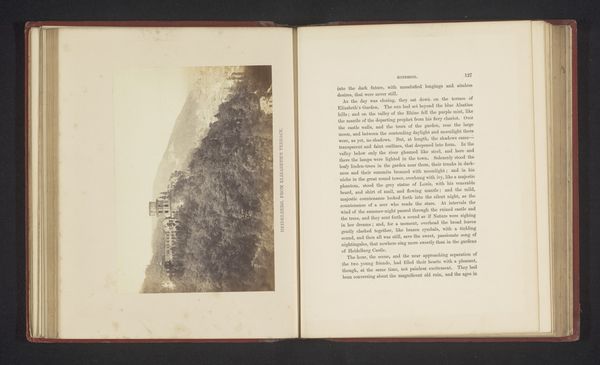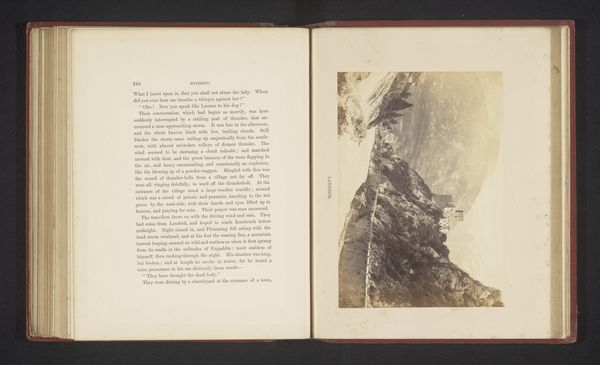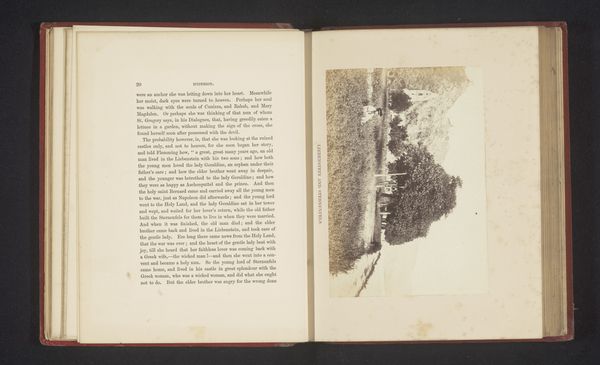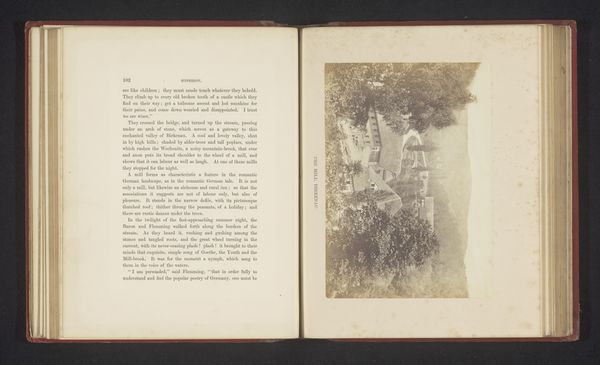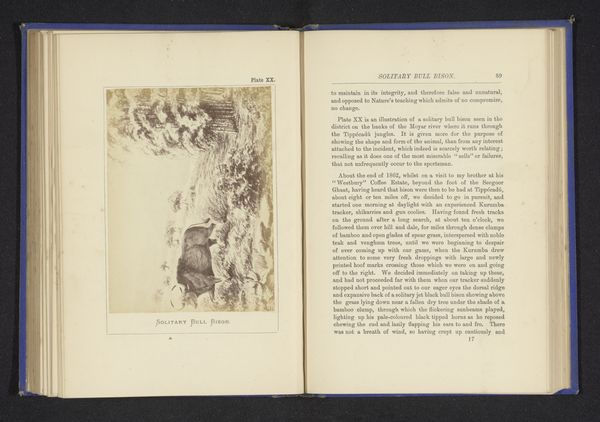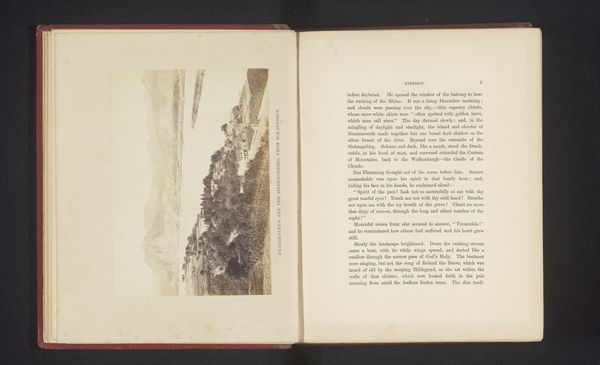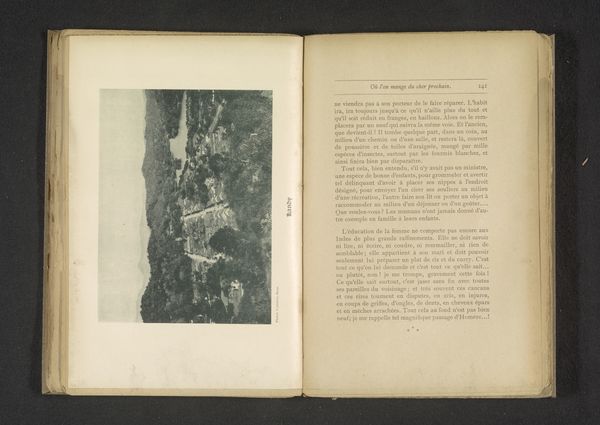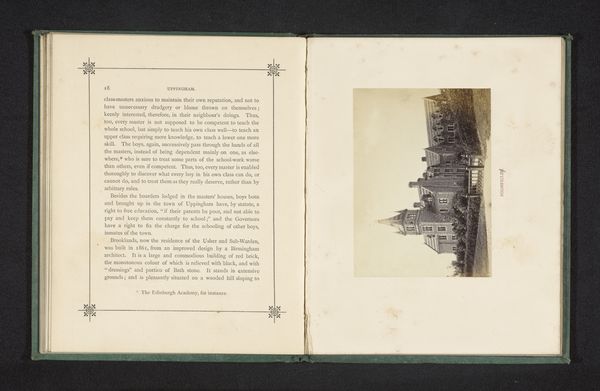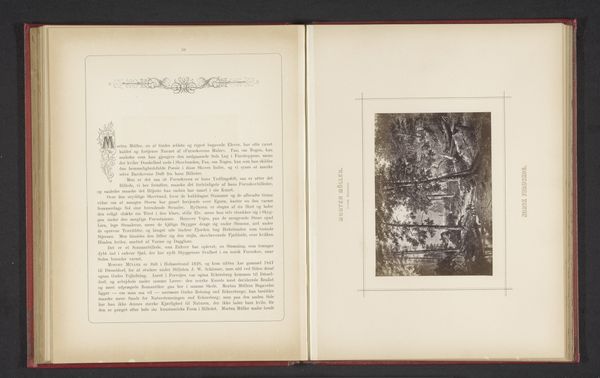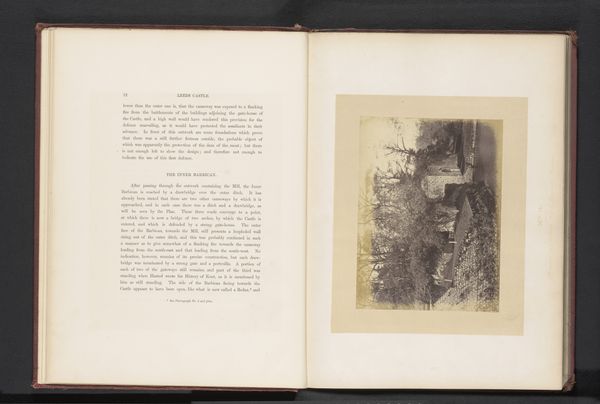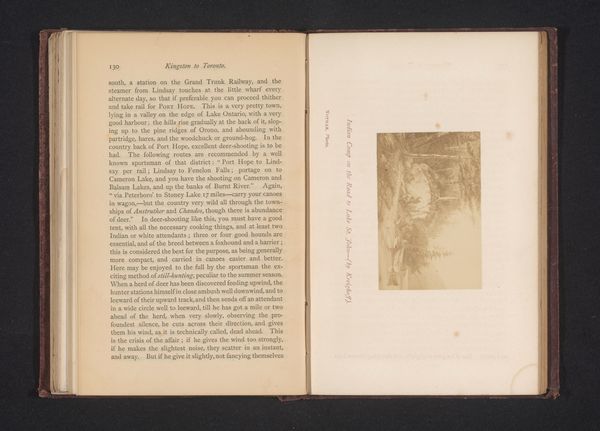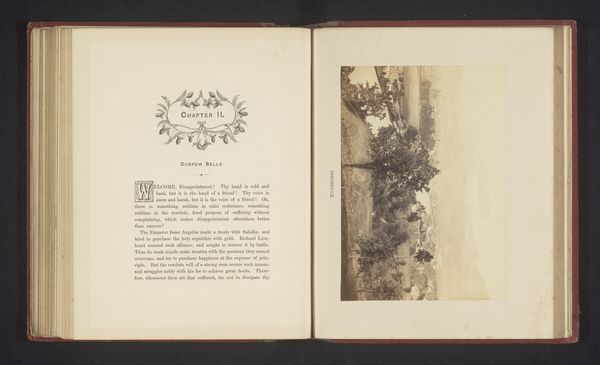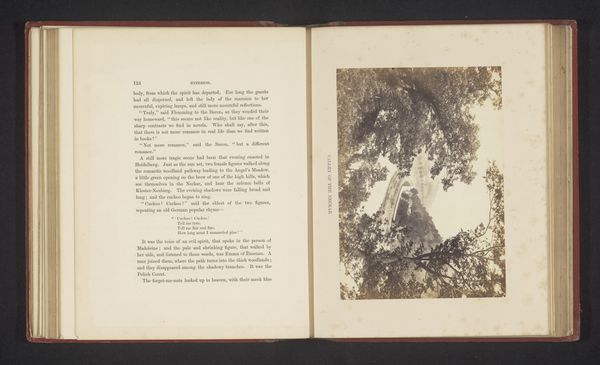
print, photography
# print
#
landscape
#
photography
Dimensions: height 100 mm, width 145 mm
Copyright: Rijks Museum: Open Domain
Curator: Here we have a photograph entitled "Europa pass-the straits and coast of Africa in the distance," created before 1870 by J.H. Mann. It appears to be a print, capturing a landscape view. What’s your immediate impression? Editor: It's like a memory, a washed-out dream. That sepia tone just bleeds history. I'm sensing isolation, a grand, sweeping emptiness—almost like looking out at the edge of the world from some lonely clifftop. Does it evoke that for you? Curator: The production values definitely affect the sense of distance—both geographical and temporal. What’s compelling here is the photograph being printed in a book. We have a mass-produced image included within a chapter, a process implying that images, as a commodity, are useful tools to supplement or reinforce texts of this era. Editor: Tools for reinforcing… yes. And what about who these images serve? I wonder about the audience originally intended for this print. Was it meant for casual consumption, or does its very existence point towards an artistic intention that transcends mere visual recording? There's something deliberately composed about this view. Curator: We could consider its function as geographical document. By examining photographic landscapes of this period, we are also able to gain insights into colonial ideologies and material realities connected to imperial expansion. I wonder what this book accompanied by this print cost, what the social status was of its primary consumers, what materials comprised the book as object? Editor: A landscape, reduced and framed—rendered tactile enough for repeated consumption in an easily accessible, portable medium. That does create a palpable connection between the viewer and the vastness being depicted. Thank you for clarifying what the tangible and symbolic value of the art in this photo book really means. Curator: And I appreciate your evocative description and personal touch. Thinking of this printed landscape now, perhaps the book itself attempts to tame the sublime by reducing the scene to manageable form, almost like a collector pinning a rare butterfly. Editor: Exactly. An object frozen in amber. Wonderful food for thought.
Comments
No comments
Be the first to comment and join the conversation on the ultimate creative platform.
